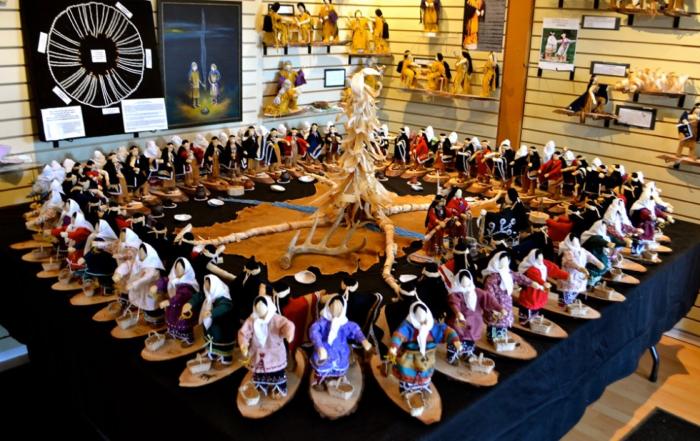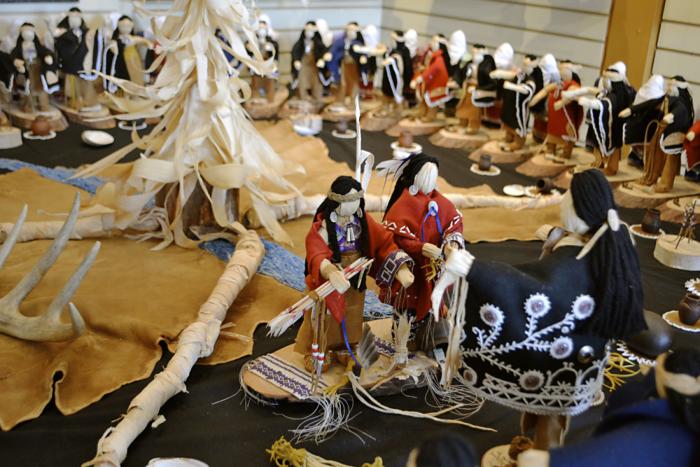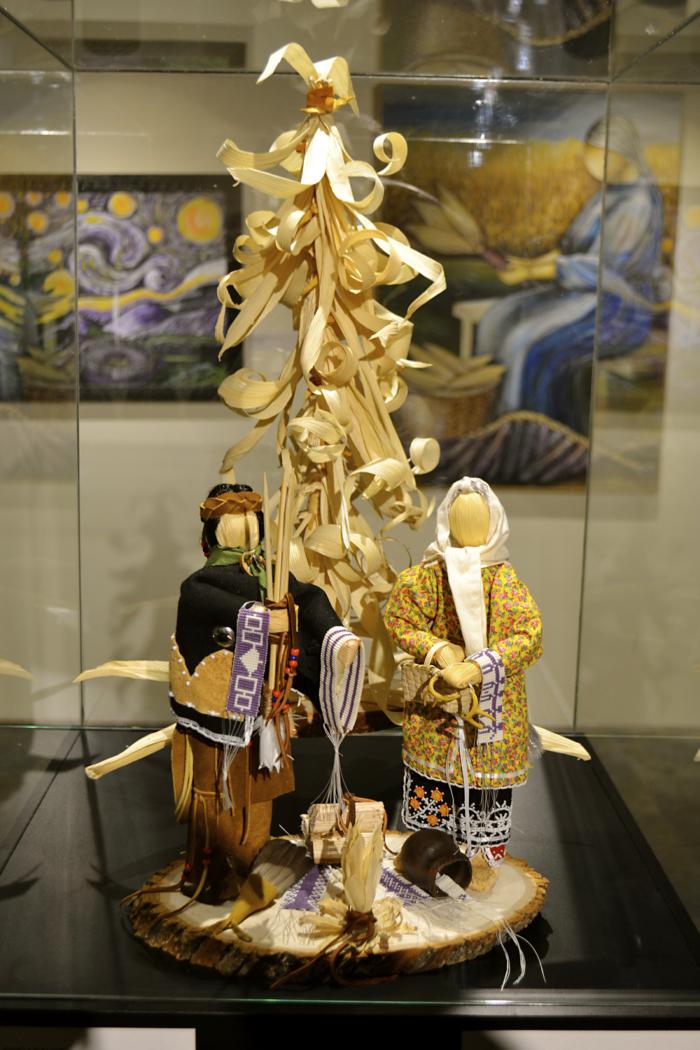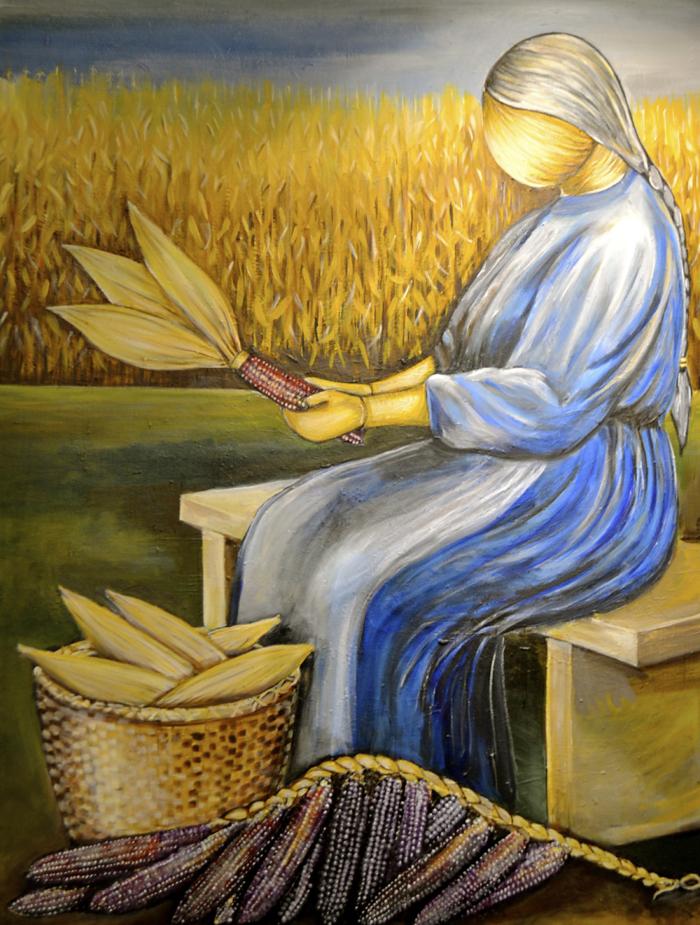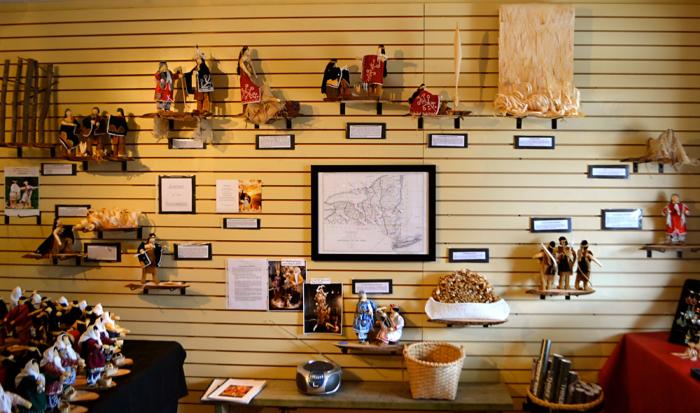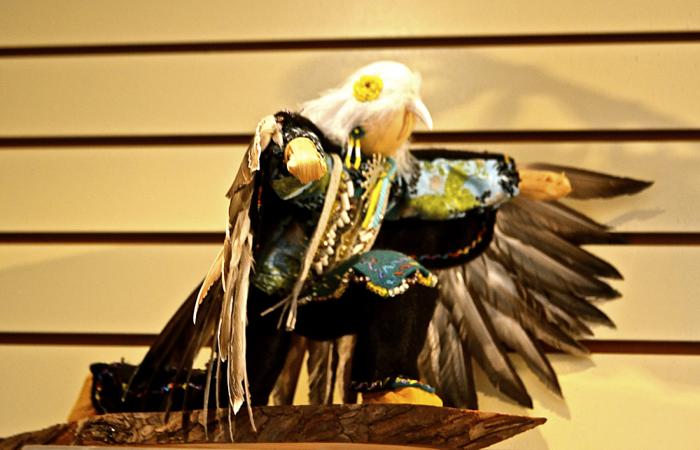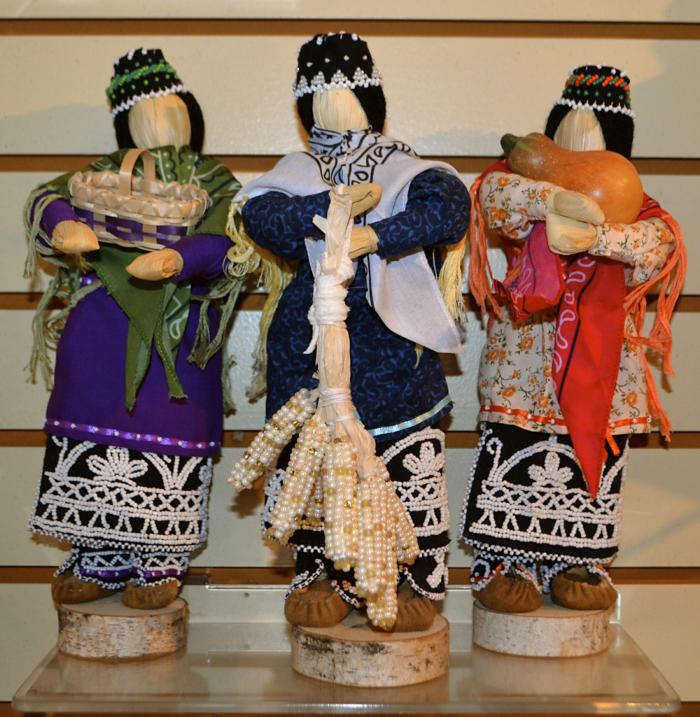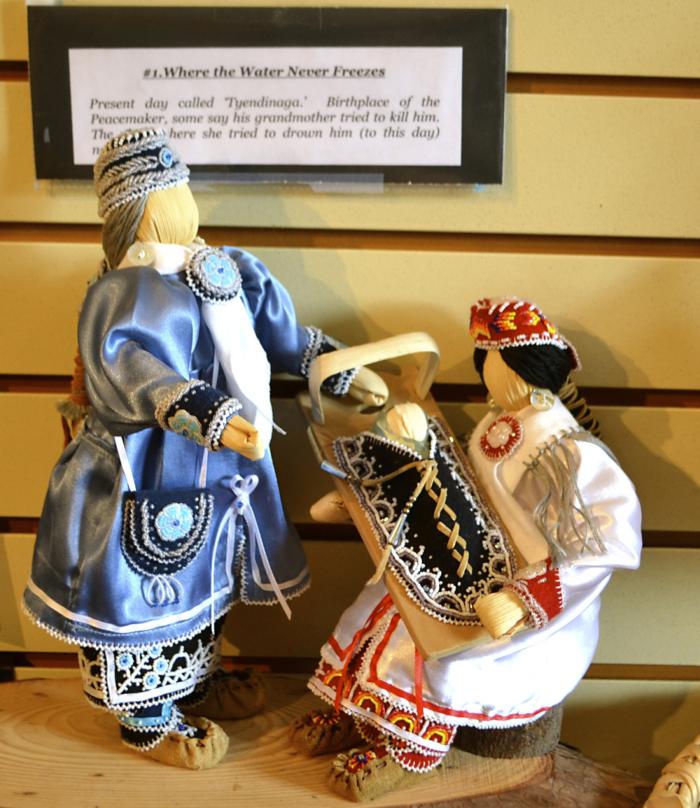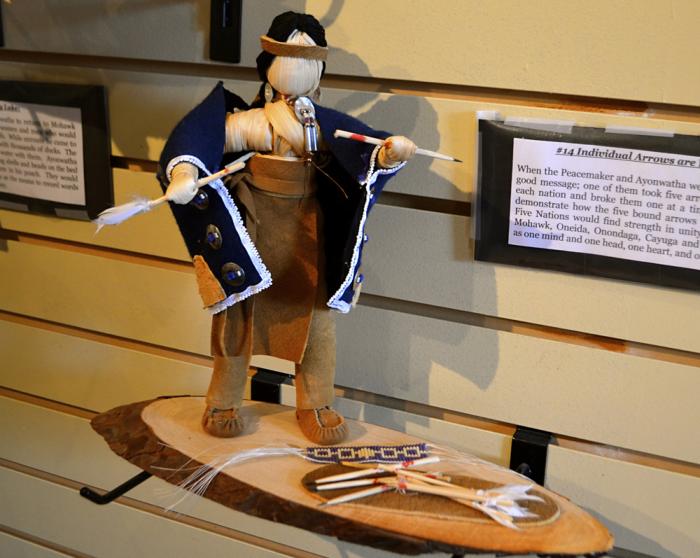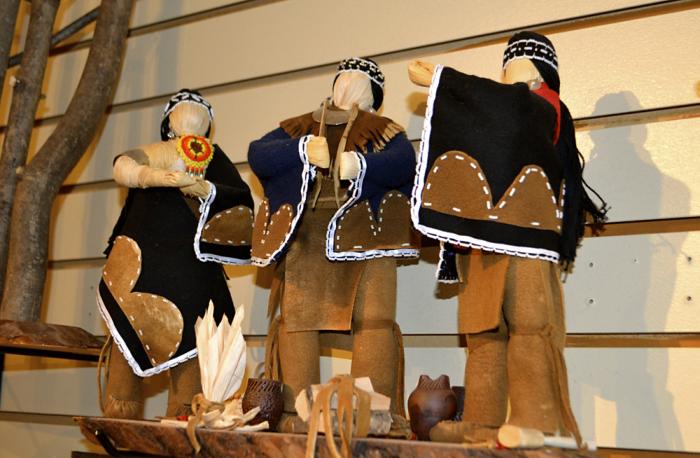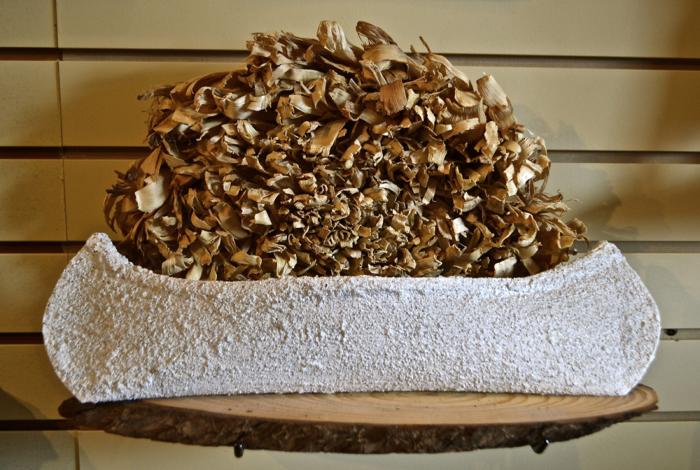 |
Canku Ota
|
 |
|
(Many Paths)
|
||
|
An Online Newsletter
Celebrating Native America
|
||
|
March 2016 - Volume
14 Number 3
|
||
|
|
||
|
Elizabeth Doxtator
|
||
|
by David Harris Sharpe
- The Brant Journal
|
||
Elizabeth Doxtator's Encircles Everything is a diorama
telling the story of the Great Law of Peace. The diorama is the
focal point of Doxtator's Everything Cornhusk Gallery. Every
nook and cranny of the small space is packed with Doxtator's
cornhusk creations, posters and educational material. A whole wall of the space tells the Journey of the Peacemaker. Informational cards are provided that explain the episodes of the story. The space is as much a museum as gallery. Doxtator fills the important role of both preserving and vividly expressing traditional Haudenosaunee culture. "I wanted to study the Great Law and understand it, said Doxtator. "I also wanted to make something to document what I was learning." A diorama is a model representing a scene with three-dimensional figures. Large-scale dioramas were popular attractions for museums in the nineteenth century. Doxtator's diorama Encircles Everything resembles a stage set in a great outdoor theatre. The cornhusk dolls are the actors in a play directed by Doxtator. Brant Journal: Why cornhusk dolls? Brant Journal: How long have you been making
cornhusk dolls? Brant Journal: Where did you learn to make
cornhusk dolls? Brant Journal: Your paintings are beautiful.
Is that something that is more recent or is that something you've
always pursued? Doxtator seemed amused by my choice of words. Painting is obviously as natural vocation as making cornhusk dolls is for her. A visit to Doxtator's gallery is worthwhile for anyone interested in learning more about Haudenosaunne culture. Everything Cornhusk is located in the Iroquois Plaza in Ohsweken and is open every Wednesday to Friday from 10 a.m. until 5 p.m., and Saturdays from 10 a.m. until 4 p.m.
"One of the most important events that shaped the Haudenosaunee was the creation of the Gayanesshagowa (gaya-ness-HA-gowa), the Great Law of Peace. It guides the Haudenosaunee through all aspects of life. A full rendition of this epic, which takes several days to tell, reveals the ways in which the Peacemaker's teachings emphasized the power of Reason, not force, to assure the three principles of the Great Law: Righteousness, Justice, and Health. The Great Law of Peace provides the Haudenosaunee people with instructions on how to treat others, directs them on how to maintain a democratic society, and expresses how Reason must prevail in order to preserve peace." National Museum of the American Indian
Peacemaker standing behind the council fire is clutching the five bound arrows symbolizing the Five Nations: (east to west) Mohawk, Oneida, Onondaga, Cayuga and Seneca, united as one mind and one head, one heart, and one power. The belts from left to right are: The Thatataho Belt represents the fourteen Onondaga chiefs. The Two Row Wampum (Second belt at Peacemaker's feet) reminds and reaffirms equality between genders and nations. The Five Nations or Ayonwatha Belt (In Peacemaker's hand). This belt symbolizes the territories now joined as in 'one longhouse.' This belt is the national belt of the Haudenosaunee. This belt records when the Five Nations buried their weapons of war to live in peace. Each square represents a nation and the line connects each nation in peace. Dust Wing Fan or Ever Growing Tree Belt (beside fire). Its white roots, have spread out, one to the north, one to the east, one to the west, and one to the south from the Haudenosaunee territory. Women's Nomination Belt (Held by Tsikosaseh the Mother of Nations/Queen of Peace.) This belt records the rights of nomination given to the women/Clan Mothers. Dish With One Spoon (In pottery). The hunting lands of the Haudenosaunee are to be shared and there should be no hunting disputes, 'they will have one dish and the food which belongs to no one will belong to all.' Paintings
Cornhusk Dolls
|
|||||||||||||||||||||||
|
|
|
|
||
|
|
||
| Canku Ota is a free Newsletter celebrating Native America, its traditions and accomplishments . We do not provide subscriber or visitor names to anyone. Some articles presented in Canku Ota may contain copyright material. We have received appropriate permissions for republishing any articles. Material appearing here is distributed without profit or monetary gain to those who have expressed an interest. This is in accordance with Title 17 U.S.C. Section 107. | ||
|
Canku Ota is a copyright ©
2000 - 2016 of Vicki Williams Barry and Paul Barry.
|
||
 |
 |
|
|
The "Canku
Ota - A Newsletter Celebrating Native America" web site and
its design is the
|
||
|
Copyright ©
1999 - 2016 of Paul C. Barry.
|
||
|
All Rights Reserved.
|
||
